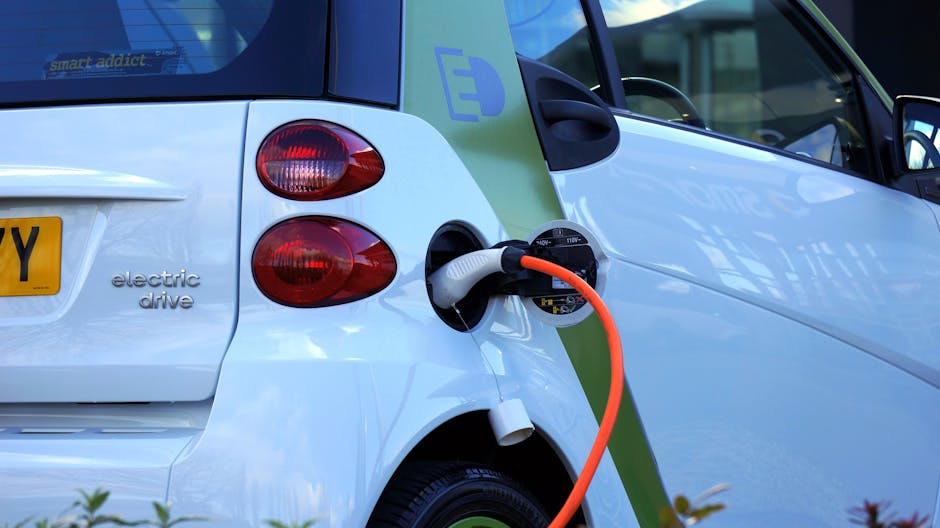The Pioneering Move: California’s Bold Decision

California has always been a trailblazer when it comes to environmental policies, and its decision to ban gas-powered cars by 2035 is no exception. This monumental decision was announced as part of an ambitious plan to cut greenhouse gas emissions and combat climate change. The state aims to transition to 100% zero-emission vehicles, which means a significant shift towards electric cars. This bold step is not just about reducing pollution; it also sets a precedent for other states and countries to follow. The move is backed by data showing that transportation is the largest source of carbon emissions in California, accounting for nearly 41% of the state’s total emissions. By eliminating gas cars, the state hopes to drastically reduce this figure and improve air quality.
Understanding the Impact on the Automotive Industry

The decision to ban gas cars will have a profound impact on the automotive industry. Car manufacturers are now tasked with accelerating their production of electric vehicles (EVs) to meet the new regulations. This shift will likely lead to innovation in battery technology, charging infrastructure, and vehicle design. Automakers such as Tesla, which is already leading in EV production, may find themselves at an advantage, while traditional car manufacturers will need to adapt quickly. Additionally, the supply chain will need to evolve, with increased demand for materials like lithium and cobalt used in EV batteries. This transformation presents both challenges and opportunities for the industry as it navigates this new landscape.
Economic Implications for Consumers

For consumers, the transition to electric vehicles brings both benefits and concerns. On the positive side, EVs tend to have lower operating costs compared to gas-powered cars. They require less maintenance, and electricity is often cheaper than gasoline. However, the upfront cost of electric vehicles can be a barrier for many. To address this, California plans to offer incentives and rebates to make EVs more affordable for all residents. Furthermore, the state is working on expanding the charging network to ensure convenience for EV owners. This initiative aims to alleviate the “range anxiety” that some potential buyers experience.
Environmental Benefits: A Breath of Fresh Air

The environmental benefits of banning gas cars are significant. By reducing reliance on fossil fuels, California expects to see a decrease in air pollution, which is linked to various health issues such as asthma and heart disease. The shift to electric vehicles will also contribute to a reduction in greenhouse gas emissions, a critical factor in combating climate change. The state’s goal is not only to improve air quality but also to preserve natural resources for future generations. This initiative aligns with global efforts to transition to cleaner energy sources and reduce the carbon footprint.
Challenges in Infrastructure Development

A major challenge in the transition to electric vehicles is the development of adequate infrastructure. California is investing heavily in building a comprehensive network of charging stations across the state. This infrastructure is crucial to support the growing number of EVs on the road. Public and private partnerships are being formed to accelerate the deployment of charging facilities, particularly in urban areas and along major highways. However, rural areas may face delays in receiving these services, highlighting the need for equitable access. The state is also encouraging innovation in fast-charging technology to reduce the time it takes to recharge an EV.
Job Market Transformation: New Opportunities and Skills

The shift towards electric vehicles will transform the job market, creating new opportunities in various sectors. As the demand for EVs grows, there will be an increased need for skilled workers in manufacturing, battery production, and charging infrastructure development. This transition may also lead to job displacement in traditional automotive sectors. To address this, California is investing in workforce training programs to equip workers with the necessary skills for the emerging green economy. These programs aim to ensure a smooth transition and provide support for those affected by the shift.
The Ripple Effect: Influencing Other States and Countries

California’s decision to ban gas cars is likely to have a ripple effect beyond its borders. Other states in the U.S. may follow suit, adopting similar policies to reduce their carbon emissions. Countries around the world are also watching closely, as California’s success could serve as a model for global efforts to combat climate change. The state’s leadership in this area demonstrates the potential for policy-driven change to drive innovation and sustainability. As more regions embrace the transition to electric vehicles, the automotive industry will continue to evolve, paving the way for a cleaner, greener future.
The Role of Renewable Energy in Supporting EVs

As California shifts towards electric vehicles, the role of renewable energy becomes increasingly important. The state is committed to expanding its renewable energy portfolio, including solar, wind, and hydroelectric power, to meet the growing demand for electricity. This transition not only supports the environmental goals of the EV initiative but also promotes energy independence. By integrating renewable energy sources, California aims to create a sustainable energy system that benefits both the environment and the economy. This approach highlights the interconnectedness of transportation and energy policies in achieving long-term sustainability.
Public Perception and Acceptance of Electric Vehicles

Public perception and acceptance are crucial factors in the success of the transition to electric vehicles. While some consumers are enthusiastic about the environmental benefits and technological advancements of EVs, others may be hesitant due to misconceptions or lack of information. Education and awareness campaigns are essential to address these concerns and promote the advantages of electric vehicles. By highlighting the cost savings, environmental impact, and performance benefits of EVs, California hopes to encourage widespread adoption. Additionally, testimonials from satisfied EV owners can help build trust and confidence in the new technology.
Looking Ahead: What Comes Next for California

As California leads the way in banning gas cars, the state is setting the stage for a future where transportation is cleaner, more sustainable, and technologically advanced. The success of this initiative will depend on continued innovation, collaboration, and commitment from all stakeholders. As the state progresses towards its 2035 goal, it will be essential to monitor and adapt policies to address emerging challenges and opportunities. This journey marks a pivotal moment in the fight against climate change, with California at the forefront of a global movement towards a more sustainable future.






